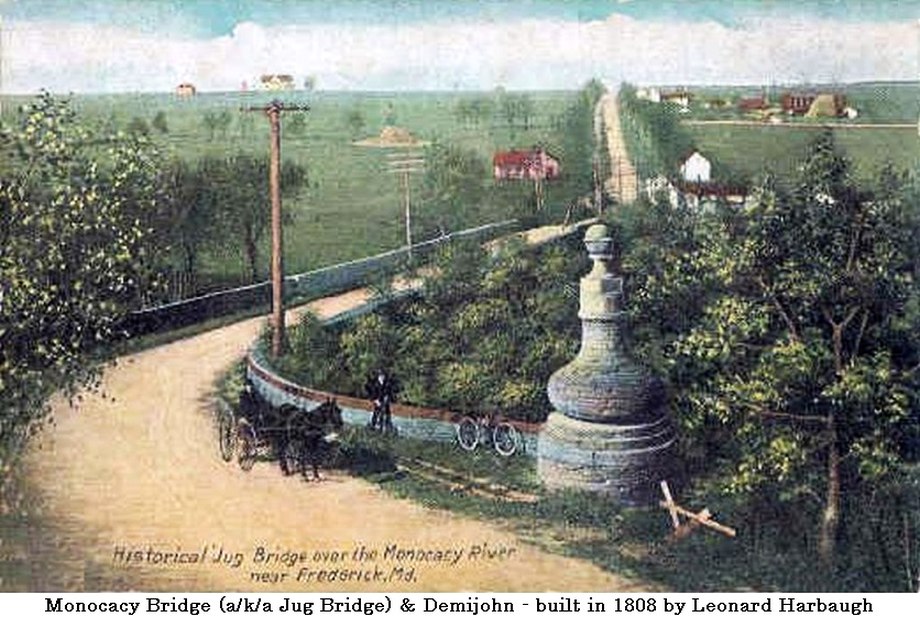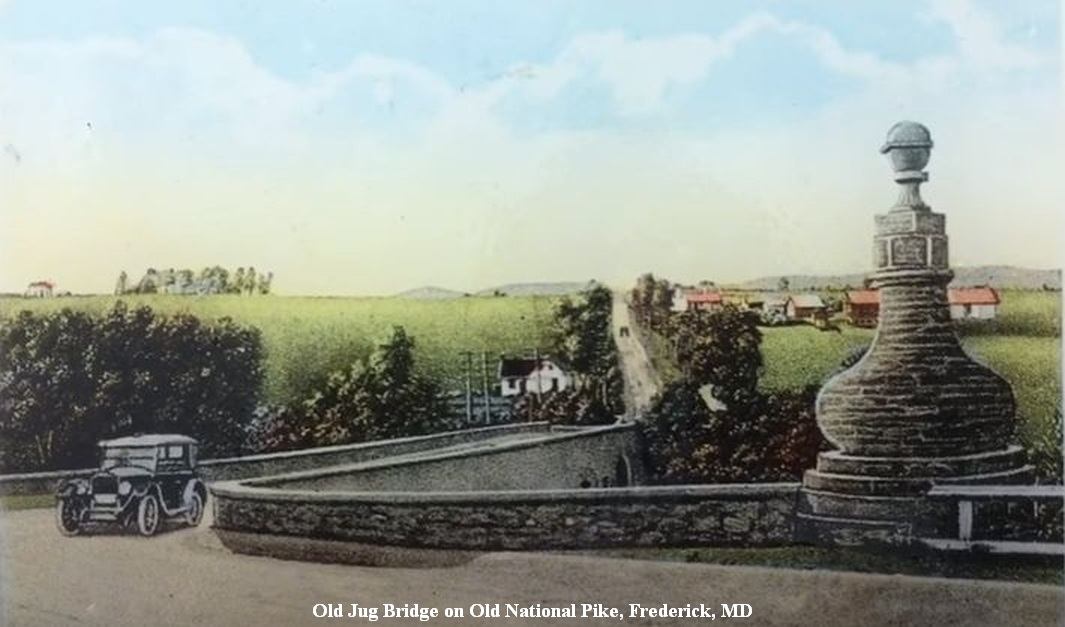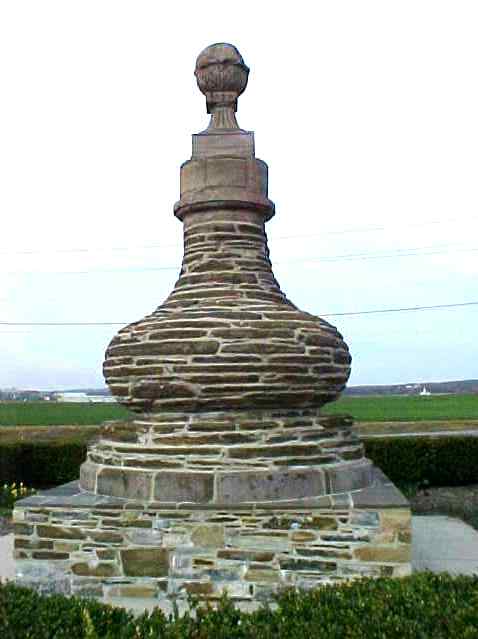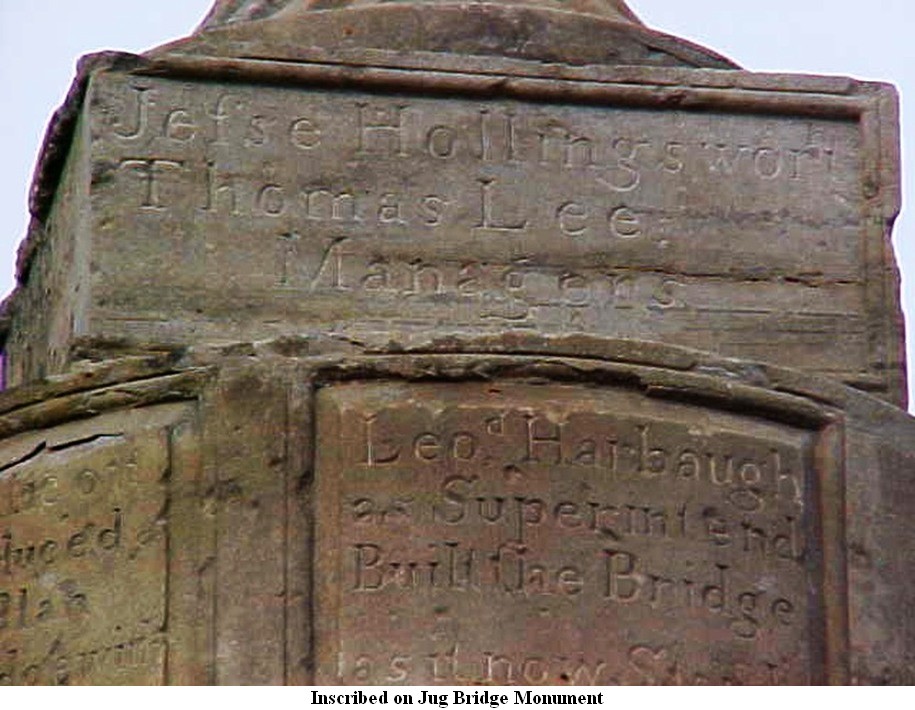Jug Bridge Monument
Frederick, Maryland
In 1804, a turnpike was begun from Baltimore to Frederick (Old National Pike) to aid local farmers in transporting their goods to market. Frederick County resident, Leonard HARBAUGH, considered one of the best stone masons of his time, was commissioned to build a 65-foot stone bridge across the Monocacy river, east of Frederick.
After the bridge was completed, Mr Harbaugh also built a large demijohn, a then popular 19th century whiskey decanter, next to the bridge. This was later referred to as a "jug" and, because of this, even though it was known as the Monocacy Bridge, it gradually became known as 'Jug Bridge', as well as the area around it.


The first white house, on the other side of the bridge and to the right of the road, was then a toll house and tavern. The large house to the left at the top of the hill was built in 1894 and was, at one time, the home of Samuel Rosenstock, benefactor of Hood College and namesake of Rosenstock Hall.
On March 3, 1942, the bridge collapsed, dropping some 20 feet of the structure into the river. Afterwards, a new higher bridge was built, followed later by an additional bridge when the road became a dual highway. (at right is the inscription on the monument)

In the late 1900's, a bus crashed into the second bridge and now only the later and highest bridge is in use.

The Jug was almost forgotten as it couldn't be seen after the higher bridges were built, so it was moved to its present location at East Patrick Street extended and Bowman Road. (Inscription on the monument on the right)